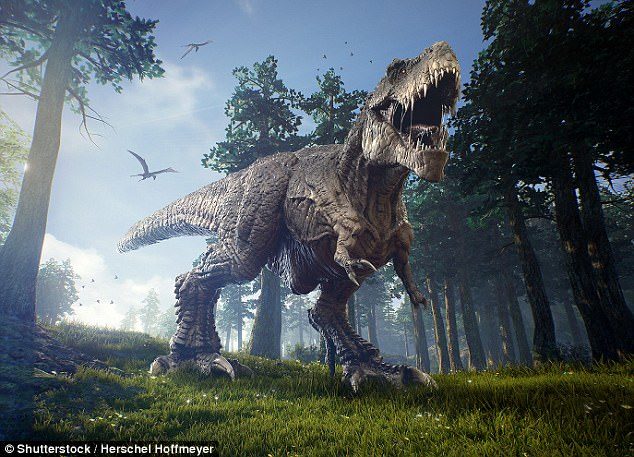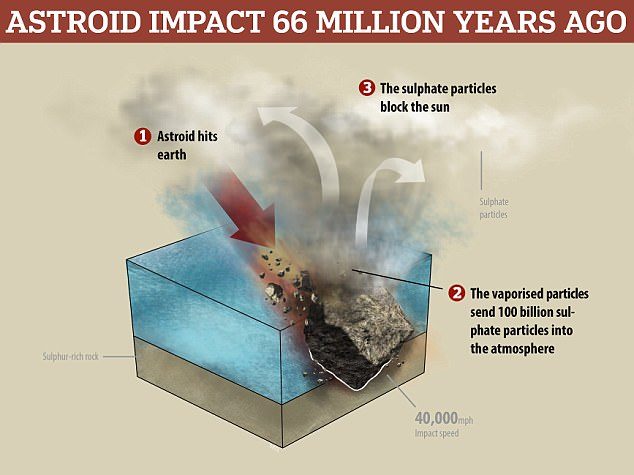
Scientists have studied the site where the asteroid hit approximately 66 million years ago in the Gulf of Mexico.
This chance encounter between an asteroid and a patch of sulfur-rich rock plunged the earth into a global winter as the vaporised sulfur cloud reflected sunlight away from the earth causing dramatic cooling, dwindling food sources and ultimately leading to the death of dinosaurs.
The asteroid's impact was so huge that the blast led to the extermination of three quarters of all life on Earth, including most of the dinosaurs.
But this chance event allowed smaller mammals - and ultimately humans - the chance to thrive.
Had the asteroid crashed seconds earlier or later it would have hit the ocean, potentially causing much less vaporisation which may have allowed the dinosaurs to survive, scientists now believe.
Professor Joanna Morgan of Imperial College London has co-led a major new study with Sean Gullick, professor of geophysics at the University of Texas, Austin into the the impact of this earth-changing asteroid.
The results of this major study will be revealed in a new BBC documentary called The Night the Dinosaurs Died which will be screened on BBC2 tomorrow at 9pm and is presented by Professors Alice Roberts and Ben Garod.
In the study, researchers have drilled into the peak ring of the Chicxulub crater in the Gulf of Mexico where the asteroid hit.
Their research has unearthed insights into how impacts can help shape planets and possibly even provide habitat for new origins of life.

Prof Gullick said that the asteroid struck the earth at a very unfortunate place - a concentration of sulfur-rich rock which vaporised, catapulting a light-reflecting cloud into the air.
Prof Gullick explained that sulphate particles reflect light, which effectively shaded the earth from the sun, dramatically cooling the planet, limiting plant growth and ultimately cutting off food supplies.
This caused the decline and death of the dinosaurs as a species which had dominated earth for 150m years.
According to Professor Joanna Morgan, the samples suggest that more than 100bn tons of sulphates were thrown into the atmosphere with extra soot from the fires that followed.
"That would be enough to cool the planet for a decade and wipe out most life," Prof Morgan said as reported by The Times.
But this dark day for the dinosaurs provided an opportunity for mammals and ultimately humans to evolve.
"Just half a million years after the extinction of the dinosaurs, landscapes had filled with mammals of all shapes and sizes. Chances are, if it wasn't for that asteroid we wouldn't be here today," scientist and BBC presenter Prof Alice Roberts told The Times.
Rock analysis has allowed scientists to calculate the size of the impact which indicates that the asteroid was approximately nine miles wide and hit the planet at 40,000mph.
This would make the asteroid equivalent to a grain of sand hitting a bowling ball.



Reader Comments
However, in order to understand the event, i.e., how much energy is involved/released, one must calculate the speed of the impact; after all, a grain of sand going nearly the speed of light would probably obliterate that bowling ball so it's a typically weak MSM analogy without analysis.
R.C.